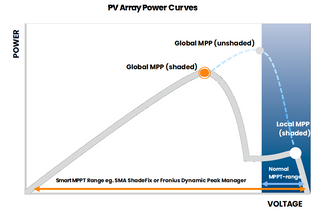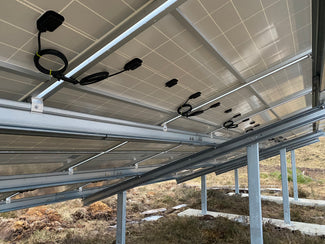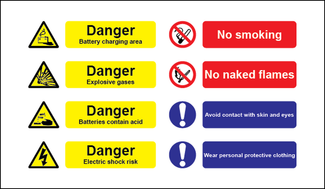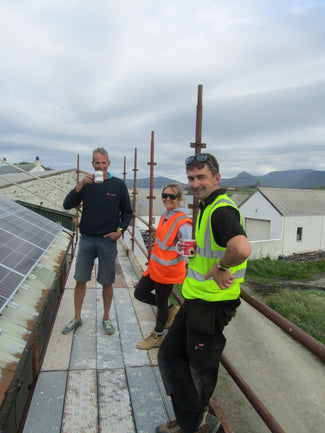
Although the equipment in properly installed systems is unlikely to fail, problems that need attending to sometimes crop up.
Don’t panic! Most problems have very simple causes and can be discovered by checking in a few key places. Wiring connections and the battery are the commonest source of problems in smaller systems.
Learn to use a multimeter when troubleshooting. This is used to measure battery state of charge; testing fuses; checking for broken wires and shorts; checking outputs and measuring voltage drops.
Consult equipment manuals
These usually contain a Troubleshooting section with some simple pointers for possible issues and solutions
First ask some basic questions:
What was the weather like before the problem? Has it been cloudy or calm? Have the loads been using more than has been generated? If this is the case then the problem may be mis-use of the system rather than failure of part of the system. Has everything been installed in accordance with the manufacturer’s instructions? Check with manuals. Often equipment protection systems include error indicators (over/under voltage etc.) - do any of these suggest a cause to the problem? Has any part of the system been changed recently? If so then has this caused the problem? What is the type, condition and age of the battery? Can it still hold a charge? Have any fuses and circuit breakers blown? If so, check to see what caused this before replacing it. Are all wires connected securely? Are any corroded? Are any broken? If the above basic checks fail to locate the problem then it’s worth doing more exploring, preferably with the help of an electrician.
WARNING! Potentially dangerous voltages may be present. Extreme caution must be taken at all times to avoid electric shock.
See section on Safety
If in doubt consult a professional wind/PV installer or an electrician.


Wind Turbines



Wind generators and wind turbines contain moving parts, hence wear will occur and at some time maintenance will be necessary. Before removing any components ensure turbine is restrained from turning
Low Output
- Is there sufficient wind? Windspeed needs to be above cut-in windspeed before charging will start and a current flow. However, an increasing output voltage will be generated as soon as the wind generator turns.
- Is wind generator siting appropriate? The best way to increase wind generator performance is to increase height of tower.
- Check operation of any controllers or wind inverters. Is battery full?
- Service wind turbine
- Check condition of turbine blades
Intermittent Output
The most common cause of this is contaminated slip-rings, worn or damaged brushes, or poor connections between wind generator and battery.
- Check for wind turbine output voltage.
- Check condition of connections, brushes & slip-rings.
Turbine Not Turning
- Check for a short circuit in the system.
- Check the generator is running freely. If it does not there may be a mechanical defect. If there is a rumbling sound, bearings may need replacing.
Excessive Vibration (or Tower Oscillation)
- Check all guy ropes are tight.
- Check tightness of all nuts and bolts.
- Check blades are fitted correctly and check them for damage.
- Check condition of wind generator bearings.






Photovoltaic (PV) Systems

Low Output
- Are PV modules shaded or dirty?
- Has vegetation grown to cause shading since installation?
- Does anything look damaged?
- Are they excessively hot?
- Check operation of inverters or charge controllers. Is battery full?
- Check condition of connections.
Warning: Cables and junction boxes will be live during daylight hours.


Batteries

- Check for fluctuating voltages
- Check condition of all connections to batteries.
- Check condition of individual batteries or cells.
- Check charger settings
- Check electrolyte level
- Check batteries are receiving sufficient charge
- Measure voltage and specific gravity of all cells.
- Check for differences between cells


Inverters

No Output
- Check all fuses
- Check isolator are in correct position
- Check DC cabling
- Check communication cabling
Low Output Power
- Check condition of connections to battery.
- Check AC output connections.
- Check battery voltage.
Low Output Voltage
- Check AC output connections.
- Check battery voltage.
Low Surge Power
- Check condition of connections to battery.
- Check size of cables to battery.
- Check condition of battery.
Low Charger Output
- Check AC input voltage and frequency is within tolerance.
- Check AC input peak voltage.
- Generator output may be too small to handle load.
- Check condition of connections to battery.
- Check AC connections.


Prevention Is Better Than Cure!
Many problems can easily be avoided:
- Choose compatible equipment in the first place
- Employ professionals to install correctly and safely
- Keep installation and operation manuals for reference
- Make sure accurate system wiring schematics are produced and kept to hand
- Make sure any required maintenance is carried out
- Always make sure battery electrolyte levels are maintained with distilled water.
- Avoid over discharge of the battery.
- Avoid always using batteries at low levels of charge - ensure regular equalising charges are achieved.
- Use instrumentation in the system to keep a regular eye on system status and performance.
- Avoid mounting controllers and inverters in damp locations.
- Service generators regularly. Check exhausts and ventilation.
- Keep all wiring in a good and safe condition.
- Ensure proper electrical earthing and lightning protection.
- Check security of any mounting fixings, frames or guy wires, regularly
- If wind generators start to make unusual noises, find out the reason.
If in doubt consult a professional wind/PV installer or an electrician.



